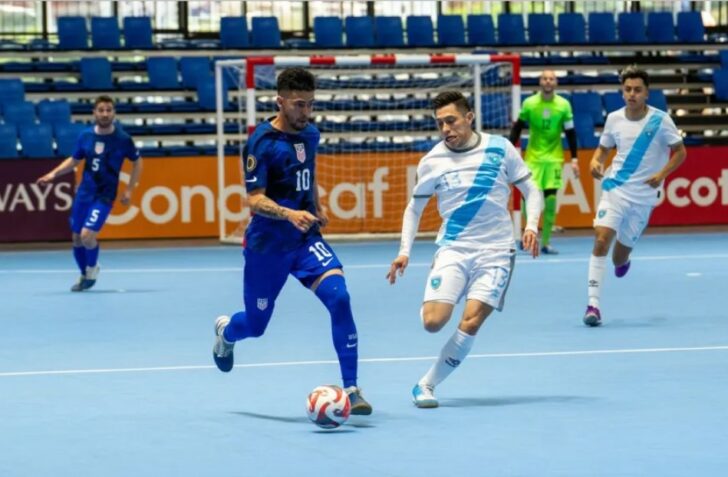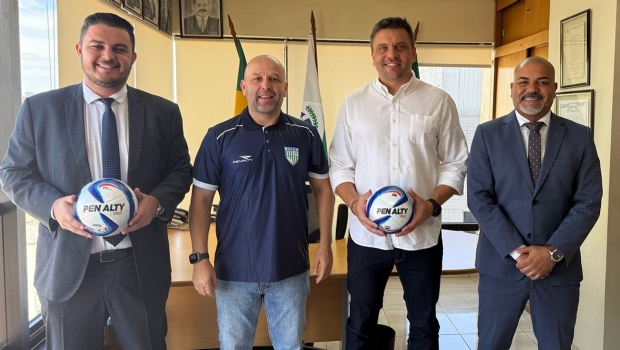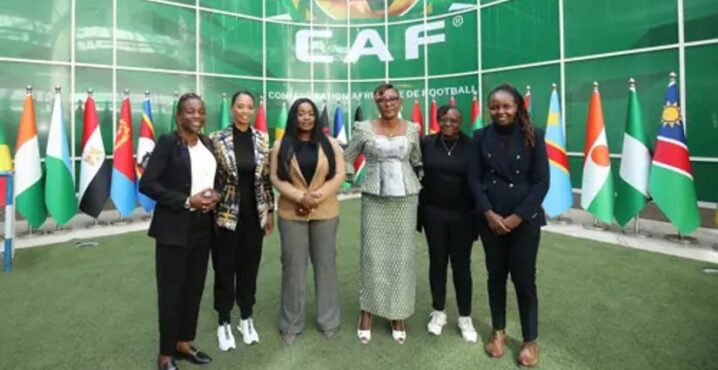Estimated reading time:30 minutes, 9 seconds
Exploring the Evolution of Futsal Amidst Shifting Dynamics in American Soccer Culture
On April 30th, I published an article titled “24 Nations Secure Their Spots in the 2024 FIFA Futsal World Cup.” In this piece, I delved into the qualification process across different regions around the world, analysing the participating nations. Additionally, I explored notable absences from the upcoming 2024 FIFA Futsal World Cup in Uzbekistan from September to October.
(Main picture source: US Soccer website)
The response to the article has been diverse, encompassing predominantly positive feedback alongside elements of frustration and disagreement. This range of reactions is healthy and constructive because articles like this and the previous article I published aim to spark discussion. When people engage in dialogue about our sport regardless of differing opinions, it underscores its significance. However, if no one is talking about it, it can impede the sport’s development, and hinder its ability to grow. Therefore, fostering discussion remains imperative for its continued progress.
One section of the article that has garnered significant attention discusses Futsal in Central and North America. Hence, I felt compelled to elaborate further in this piece to explain why I specifically concentrated on the United States under the heading of notable absentees in this region. And why, in my view, their omission from this year’s World Cup holds significance.
The Historical Context of America’s Involvement in FIFA Futsal Competitions
Since 1989, only six nations from this region have participated in the World Cup final tournament. In 1996, when Concacaf launched qualifiers for the World Cup, Costa Rica leads with four Gold and one Bronze, followed by the United States with two Gold, one Silver, and two Bronze medals. Guatemala has secured one Gold, one Silver, and three Bronze medals, while Panama has earned one of each. Cuba boasts five Silver medals, and Mexico has clinched one Bronze.
Among these nations, the United States stands out for its illustrious indoor football history dating back to the 1930s. Initially invited to the 1989 and 1992 World Cups, they later secured qualification for the 1996 edition by winning their regional competition.
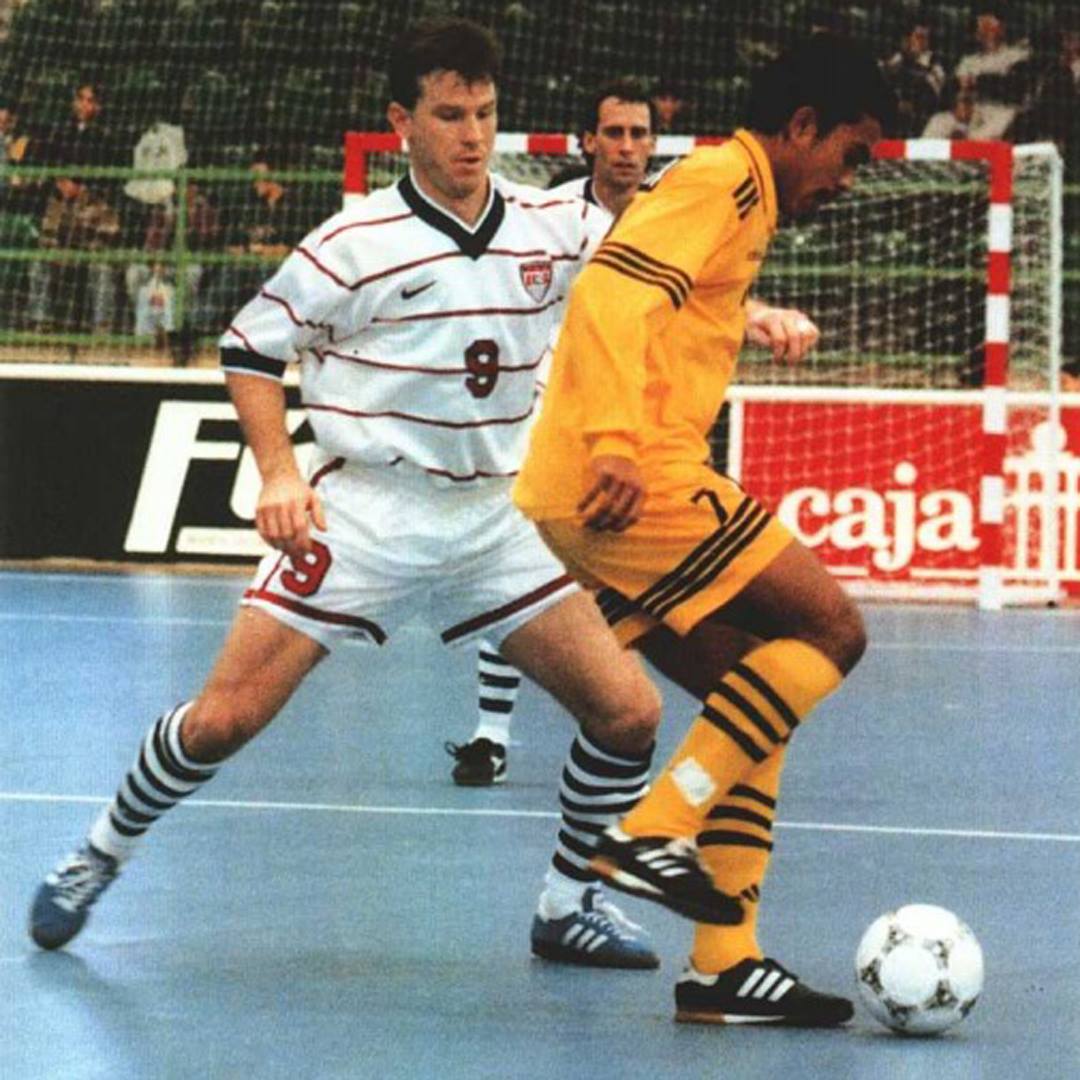
U.S. Soccer facing Football Association of Malaysia (Official) at the FIFA Futsal World Championship Spain 1996 – source of the image: FIFA Futsal World Cup Facebook page
Their performance in the inaugural 1989 Championship saw them secure a respectable third-place finish, followed by a commendable runner-up position in 1992. However, despite a victory over Malaysia in 1996, defeats to Italy and Uruguay prevented them from advancing beyond the group stage.
Their streak of World Cup appearances faced a significant hurdle in 2000 when they failed to qualify, falling to Cuba in the semi-finals of the qualification tournament with a 4-2 scoreline. Notably, during this period, CONCACAF only had two slots for the World Cup, rendering progression impossible despite their third-place finish.
In 2004, the United States made a comeback to the World Cup stage, winning the regional championship, and showcasing a strong performance in the initial round. They secured second place in their group, falling just behind Italy, after defeating Paraguay but drew against Japan. However, their journey into the second round saw them finish at the bottom of the group, contending against Brazil, Argentina, and Ukraine.
In 2008, the United States qualified for the final tournament but failed to retain their regional title, securing their spot in third place as CONCACAF slots increased to three. The World Cup that year proved challenging for the US team. They ended up at the bottom of their group, suffering defeats against Paraguay (5-0), Italy (1-6), Portugal (8-1), and Thailand (5-3).
In 2012, the US failed to progress past the first stage in their regional competition, finishing in third place in their group. In 2016, the North American Zone, Mexico qualified automatically for the regional competition as the highest-placed North American team from the 2012 CONCACAF Futsal Championship. The remaining two teams from the North American Football Union (NAFU), Canada and the United States, played in a two-match aggregate-goals play-off in Costa Rica on 4 and 5 May 2016, with the winner qualifying for the final regional tournament, World Cup qualifier. The United States drew the first match 4-4 and lost the second, 3-5, failing to qualify for the regional competition.
The Evolution of Futsal Tactics
Before moving on, let’s reflect on the period from the early 2000s and consider the external factors that influenced the performance of different US national futsal teams. Along with the evolution of futsal as a sport under FIFA’s governance.
From 1989 until the year 2000, despite the US failing to qualify for the World Cup in 2000, the national team posed as a formidable opponent, demonstrating commendable performances in FIFA’s competitions. However, the futsal landscape changed drastically from 2000 onwards, as indicated by the provided information. This marked the period when the demands of the sport began to challenge the US national team significantly.
In the year 2000, FIFA began implementing pivotal rule changes that continued through the early 2000s, adjustments encompassed alterations to the pitch size, the introduction of a smaller and less bounce ball, modifications to squad sizes, and refinements to rules governing substitutions and restarts. These changes were instrumental in initiating the process of solidifying futsal as a unique and independent sport, diverging from indoor soccer, and laying the groundwork for its continual growth and development under FIFA’s stewardship.
Simultaneously, tactical changes and advancements began to emerge in futsal, shaping the strategies employed by teams worldwide. While the fundamental principles of futsal remained consistent—such as quick passing, close control, and rapid transitions—teams started to adopt more sophisticated tactics to gain a competitive edge.
One notable development was the increased emphasis on positional play and movement. Teams began to employ structured formations and positional roles, with players specializing in specific positions to optimize their effectiveness on the court. Additionally, the implementation of set plays and refined defensive tactics further contributed to the evolution of futsal’s strategic landscape.
During this period, the 4-0 formation gained prominence as teams recognized its tactical advantages in both defense and attack. Coaches began to emphasize structured positional play, with players assuming specific roles within the formation to maximize efficiency. By the late 2000s and into the 2010s, the 4-0 formation had become a staple in modern futsal tactics, reflecting the sport’s continual evolution and adaptation to new challenges.
Overall, the early 2000s marked a transformative period for futsal, characterized by significant rule changes and tactical advancements. These developments not only shaped the direction of the sport worldwide but also posed both challenges and opportunities for national teams, including the United States. However, as the sport evolved and became more competitive, the US national futsal team faced difficulties adapting to the changing landscape. This was evident in their failure to qualify for the World Cup in 2000, their subsequent performance decline in the final tournament in 2004 and 2008, failing to qualify for the World Cup in 2012, and not qualifying for their regional competition in 2016.
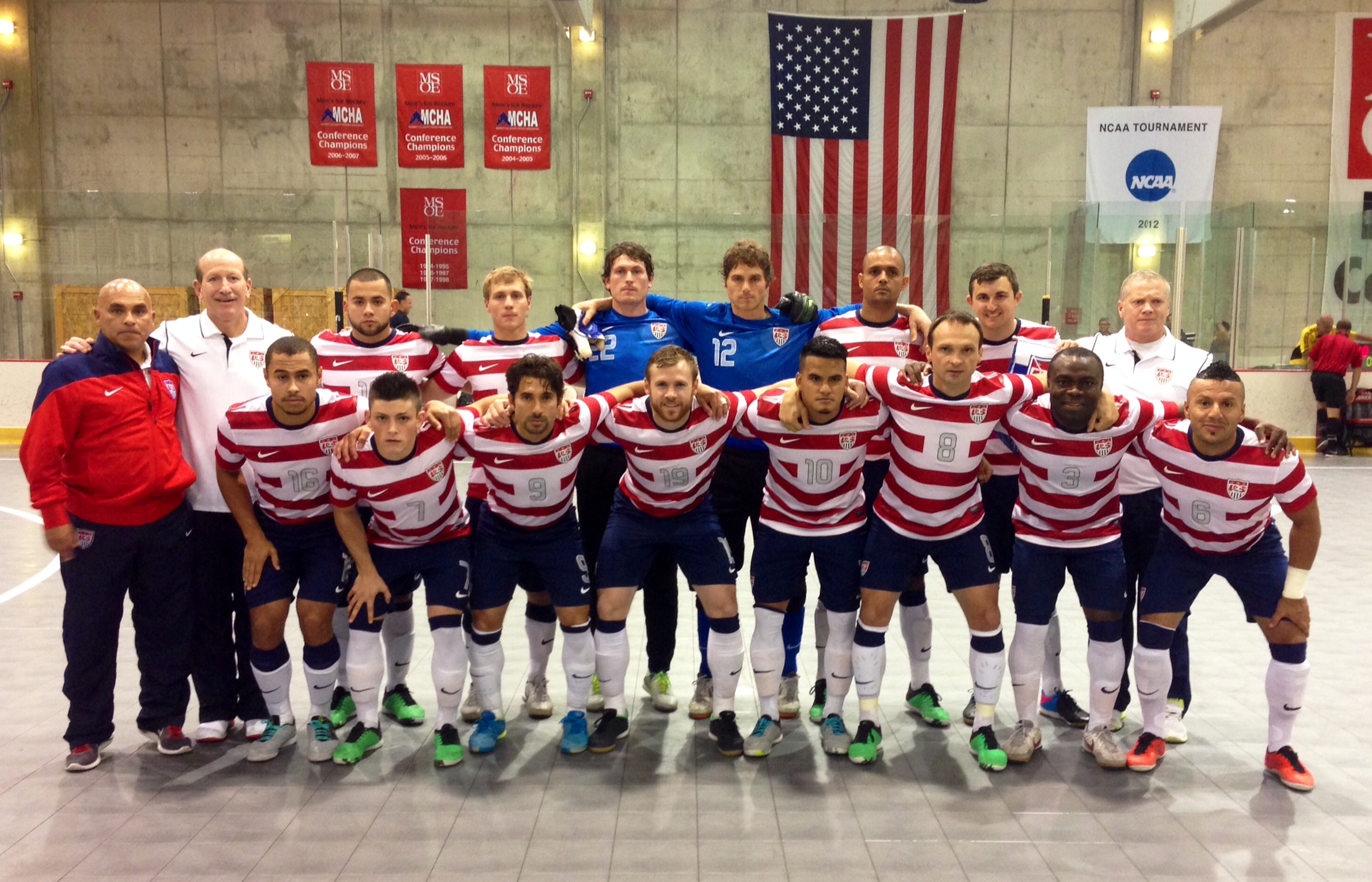
US National Futsal team pictured in 2015 – source of the image: SoccerWire
So why discuss this? Why does it matter? You might be wondering. Well, from 1989 until the 2016 Concacaf Futsal Championship, the US National Futsal team was under the control and management of the indoor game. And, from 1996 until after the 2016 qualifiers, Keith Tozer, initially served as an interim coach and assistant coach before taking the head coach position in 1998.
Since 1984 Tozer, became one of the most successful coaches in U.S. soccer history, and the all-time winningest coach in North American Indoor soccer with over 700 wins, six league championships, and eight Coach of the Year awards. But in the early years of his tenure as head coach of the American national futsal team, the US failed to qualify for the World Cup in 2000. Keith and his team would later bounce back on the regional stage, winning the Concacaf Futsal Championship in 2004 and then qualifying for the World Cup in third place in 2008. But, these two World Cups showed the start of the US decline on the world stage, then in 2012, and 2016 the decline began to show regionally.
The reasons for this decline are multifaceted, as previously discussed. Futsal was gradually diverging from indoor soccer, and unfortunately, the US futsal team failed to keep pace with these changes. Several factors contributed to this stagnation, including the limited pool of available players, insufficient investment in the sport by US Soccer, the limited number of futsal players, and the predominant recruitment of players from the indoor soccer scene. Additionally, the head coach’s primary professional coaching experience lay in the indoor format, which may have hindered the team’s adaptation to the evolving demands of futsal.
Transitioning Leadership: From Tozer to Jakica, and Hewerton Moreira
In 2021, a significant shift occurred with the appointment of Dusan Jakica, from Serbia, as the Head Coach of the U.S National Futsal team. With over 30 years of experience specifically in futsal, Jakica brought a fresh perspective to the team. Despite the challenges posed by the COVID-19 pandemic, Jakica identified players capable of transitioning from Indoor Soccer to futsal and recruited talented players playing futsal abroad in Italy and France.
Under Jakica’s guidance, the team demonstrated remarkable progress, reaching the final of the regional tournament while conceding only five goals in the group stage and four additional goals throughout the knockout stages. Despite a tough draw at the World Cup in Lithuania, facing off against powerhouses like Argentina, the team showcased resilience and determination. While the tournament saw some challenging results, including an 11-0 loss to eventual tournament winners, Argentina, and a 7-0 defeat in their final group game against Serbia, commentators and fans alike were impressed by the team’s competitive spirit and performance on the court particularly against Iran, now 13-time winners of the AFC Futsal Asian Cup, losing 4-2.
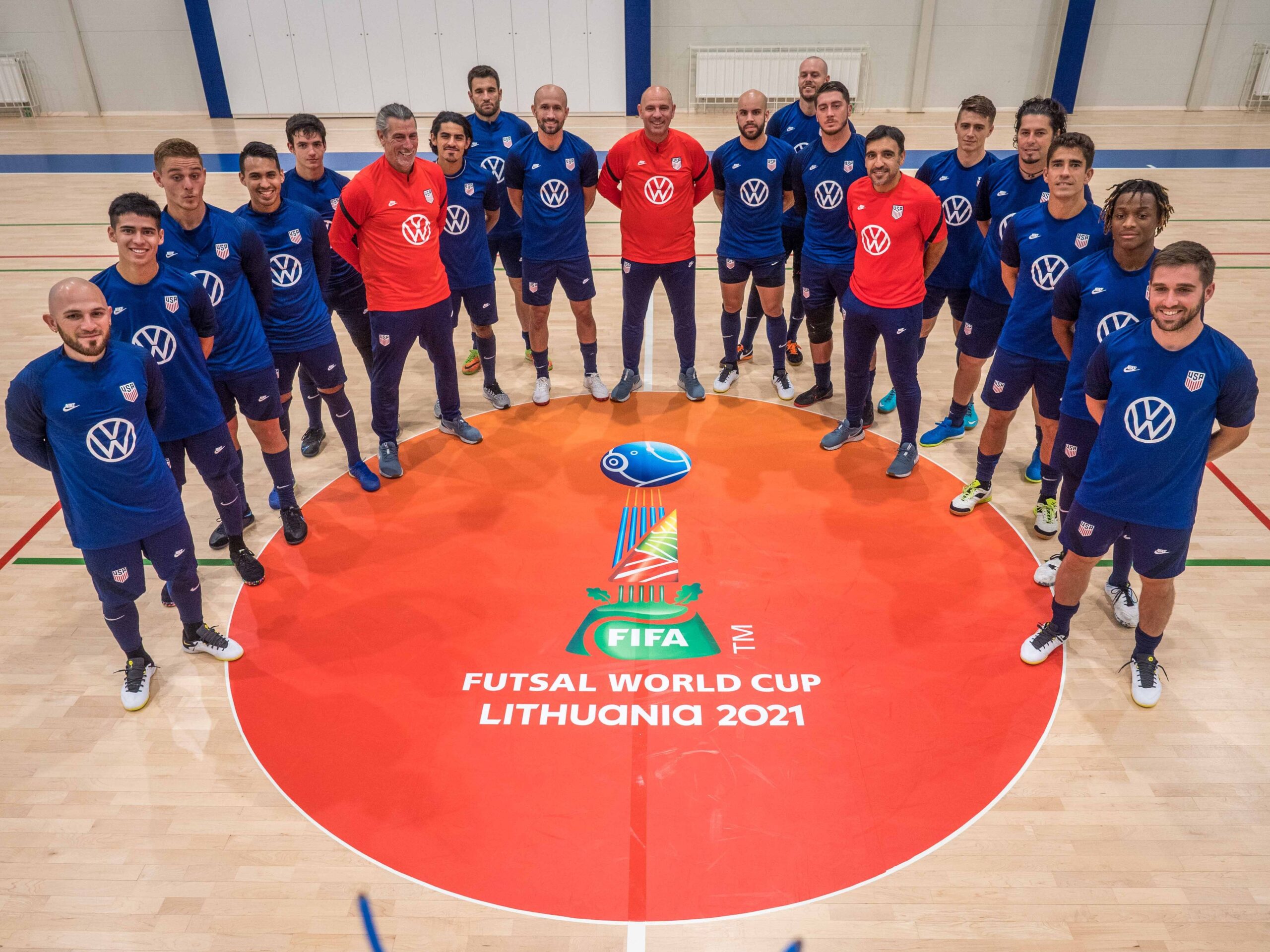
US National Futsal team pictured at the 2021 FIFA Futsal World Cup in Lithuania
After the World Cup, Dusan continued to coach the team, until he was replaced by Hewerton Moreira shortly before this year’s Concacaf regional qualifiers. Why Dusan was replaced has never been made clear. Hewerton was a futsal player in his youth, but he has spent most of his adult career in Indoor Soccer as a player and coach. In 2004, Moreira came to the United States where he carved out a hugely successful 16-year indoor soccer career, registering 198 goals and 174 assists in 301 matches for various clubs in the Major Indoor Soccer League and Major Arena Soccer League. Moreira’s most successful spell as a player came during two different stints with the Milwaukee Wave, helping the club to three MISL championships in 2004-05, 2010-11 and 2011-12.
In this year’s Concacaf Futsal Championship, the U.S. National Futsal team’s fortunes took a downturn, conceding a total of 16 goals – 14 in the group stage and an additional two in the quarterfinals. This defensive vulnerability, coupled with concerning displays of discipline and temperament, has raised questions regarding both the players and coaching staff. The team’s performance at times looked more indoor and less like futsal. There were few tactical substitution/ rotations, issues with ball turnover on the by-lines, and defending leads when they struggled to defend which their goal deficit from match day one against Trinidad & Tobago (a team consisting of football players) demonstrated, and subsequent matches onward.
Challenges and Potential in CONCACAF Futsal: A Closer Look at Regional Concerns and Opportunities
Other concerns persist regarding the region as well. In 2021, commentators began to discuss for the first time that the level of futsal, across the board, in the Concacaf region was declining. And, in this year’s competition, Costa Rica, a powerhouse in CONCACAF futsal, fell short of winning their fourth consecutive title, settling for fourth place instead. Their performance underscores the fierce competition in the region and the need for continued improvement to maintain their dominance. Cuba, despite being the youngest squad in the competition, impressed by testing both former champions and eventual winners, Panama. Their promising performance signals their potential as a team to watch in future regional competitions, highlighting the bright future of Cuban futsal. However, the CONCACAF region faces significant challenges, particularly in terms of development and investment. The tournament revealed a prevalent old-school perspective in the style of play, indicating the need for modernization and tactical evolution. Investing in coaching and infrastructure will be crucial to elevate the quality of play and competitiveness in the region. Undoubtedly, during the World Cup draw, every participating nation will eagerly anticipate the chance to have a Concacaf team placed in their group.
Reassessing the Role of Indoor Soccer
The analysis of the United States futsal history and its recent performance raises pertinent questions about the evolution of the sport and the role of indoor soccer in its development. While the early years saw considerable success before and during the management of Keith Tozer, winning the Concacaf regional championship, qualifying for World Cups in 2004 and 2008, the changing landscape of futsal post-2000 also posed challenges to the continued involvement of indoor soccer as success on one hand saw a decline in the other.
The appointment of Dusan Jakica in 2021 marked a significant shift towards a more futsal-centric approach. Despite Jakica’s initial success, his recent replacement by Hewerton Moreira, while having futsal experience in his youth, his background lies predominantly in indoor soccer, underscores the ongoing debate surrounding the suitability of indoor soccer involvement in modern futsal.
The recent downturn in the US National Futsal team’s fortunes, evident in the Concacaf Futsal Championship, highlights the pressing need for a reassessment of coaching strategies and player development pathways to align with the evolving demands of futsal as an independent sport.
The intention of this article is not to criticize Keith Tozer or Hewerton Moreira and neither was it the intention of the previous article Futsal Focus published; rather, it offers an opinion that indoor soccer’s relevance in futsal has waned over time, as the two sports have diverged significantly in playing style, coaching, rules etc… It questions why the Major Arena Soccer League (MASL)/ Indoor Soccer, not officially recognized by FIFA or US Soccer, continues to exert influence over American Futsal when it no longer aligns with futsal’s international standards. And why does US Soccer allow this when they are distinct from the sport and its governing body? While acknowledging the contributions of figures like Keith Tozer, who has played a pivotal role in fostering futsal’s growth, particularly through initiatives with US Soccer, and US Youth Futsal, as he was instrumental in developing futsal coach education courses. Along with championing the development of the Professional Futsal League (PFL) which unfortunately failed to come to fruition, it suggests that their current involvement, primarily in indoor soccer, raises concerns.
With Tozer serving as the League’s Commissioner and Hewerton Moreira heavily involved in one of the League’s club franchises, Utica City FC. The article presents the perspective that if MASL or indoor soccer wishes to maintain involvement in futsal at the international level, it should transition to futsal and actively support the sport’s domestic development. This sentiment has been previously expressed by Futsal Focus in an article titled ‘From Indoor Soccer To Futsal: A Transformational Journey for the MASL.’ MASL clubs could transition away from their current venue agreements with NHL (Ice Hockey) clubs and strike agreements with NBA G League clubs, who play at smaller venues than NBA clubs. This would give the new Major Arena Futsal League (if they transitioned) the needed venue capacity with the right marketing and their current following to fill arenas. Conversely, if MASL chooses not to make this transition, then it is a rival sport, and why would a rival sport wish to see futsal grow, a sport with the potential to challenge its position as the representative indoor game of the nation on a broader international stage? And a sport that would challenge its position domestically for media attention, player and coach participation, sponsorship, and more.
MASL’s Influence and the Debate Over Futsal’s Direction
The American futsal community, along with its market, must engage in introspection regarding its long-term aspirations. Over the next decade, it needs to define its goals regarding player and coach development, the overall growth of the sport domestically, and how it hopes to perform internationally. A critical question arises: Will the involvement of Indoor/ MASL propel these ambitions forward or potentially hinder their realization? It’s imperative for stakeholders to carefully consider the direction they wish to take and whether MASL or Indoor Soccer involvement serves the best interests of American futsal’s future trajectory.
America is such an important market for the development of futsal due to several key factors. Firstly, its indoor soccer history and culture along with its sheer size and economic power, makes it an attractive destination for sports organizations and brands. With a large population and high levels of disposable income, the American market presents ample opportunities for revenue generation and expansion in futsal.
Secondly, the influence of American media and entertainment is unparalleled globally. Sports events and athletes from the United States receive extensive coverage and would contribute to the global visibility and popularity of futsal. This media exposure can significantly impact the sport’s growth and development on an international scale.
The United States is a hub for innovation and technological advancement that often extends to the sports industry. Innovations originating in the U.S., such as digital broadcasting technologies and data analytics, could shape the future of futsal worldwide, enhancing the fan experience and driving engagement.
American culture and values have a profound impact on global trends, including sports. Trends and developments in the American sports scene often influence practices and preferences in other parts of the world and could drive innovation and adaptation in futsal.
Furthermore, the United States boasts a diverse population with a passion for sports, contributing to a vast talent pool across various disciplines. Participation in sports at the grassroots level fuels talent development and competition, ultimately providing the potential to help elevate the quality and competitiveness of futsal on a global scale.
The American market offers lucrative opportunities for sports sponsorship, advertising, and investment. Major corporations often seek partnerships with sports organizations and events in the United States to enhance their brand visibility and engagement which would see consumers driving financial support and resources into the futsal industry.
Finally, looking to the future, leadership is needed, the politics must be addressed, and the investment required to develop the sport. The recent Concacaf performance as mentioned in the previous article, should catalyze the American Futsal community to advocate for futsal to stop being an extended team sport and its development made a priority within US Soccer. This entails allocating opportunities for coaches and players who are solely dedicated to futsal, thereby investing in its long-term growth. Neglecting coaches and players committed to futsal undermines the value of futsal leagues and tournaments across the states and diminishes the incentive for individuals to pursue coach education or enhance their skills as players.
Without accessible opportunities for involvement and advancement, there’s a risk of stagnating talent development and the overall quality of futsal within the nation. Therefore, it is imperative for US Soccer to recognize the importance of futsal and to provide the necessary resources and pathways for its dedicated practitioners to thrive.
This article will challenge the narrative that people involved in MASL/ Indoor Soccer and futsal in America or those interested in the American market have been told, for a long time. For those invested in the current status quo, this will challenge and threaten their outlook and what they have been invested in for so long, and their reaction may be anger and a desire to challenge the content discussed in this article and defend what they believe in. But I think discussions like this pushes people out of their comfort zone, and out of your comfort zone is really where progress happens.
Otto Orf’s Insights: The Need for Support and Transition
We had the opportunity to engage with Otto Orf, the former assistant head coach of the US National Futsal team under Dusan. He played for the national team from 1996 to 2003 during some of its most successful years and Keith was his coach throughout. With his background rooted in indoor and outdoor soccer, we sought his insights on the points discussed in this article:
“Futsal is not promoted enough in the United States and needs increased support from our Soccer Federation. US Soccer resources are dedicated to the men’s and women’s outdoor teams and then spread amongst numerous extended national teams of which futsal is one. In my opinion, if not for indoor soccer and Keith Tozer, there would not have been any success or leader in the game of futsal in our country for the past three decades.
I know from experience that Keith and Hewerton want to compete with the most qualified players. Regardless of their affiliation or playing background to represent our country with pride during their leadership of the national team. But it must be understood that the US Futsal National Team is a part-time venture that only ramps up every four years for qualifying and there are many hurdles to overcome in the process, some of which I hope I can convey.
Since we have no consistent futsal opportunities in the US at the critical ages of 16-25, under their separate leaderships they selected the best indoor soccer players and futsal players that were available and eligible for selection to compete on their squads. Most of the players who compete in adult futsal leagues across our country would be considered semi-professional at best, and the majority are not even US citizens, so selections from this pool of players are extremely limited. However, I will admit that this doesn’t mean the ones who are available couldn’t be beneficial to the national team but we would need more time with them which the current US Soccer budget does not allow for. If we identify a network of futsal coaches across the country who identify and bring to the national team coach’s attention, teenagers and young adults capable of making an impact it would certainly be a big help. Having the right coach in place at the national team level to work with them and a comprehensive plan to share with the amateur futsal coaches will also make a big difference.
Furthermore, pro-soccer teams and universities often won’t release their best players for international futsal competitions so ultimately, Indoor Soccer was the best and only option when it came to recruiting players for international futsal tournaments. Looking back on my futsal career, this is actually how I was able to become a part of our national futsal program. I had never played futsal in my life but the transition, for me as an indoor soccer goalkeeper was fairly simple because it suited my skillset, and I fell in love with the sport. I grew up as a hockey goalkeeper and a baseball pitcher in college. The angle play, shot-blocking strategy, and reflexes of the hockey goalkeeper and my ¾ arm baseball throwing style perfectly matched the game of futsal. I was a futsal goalkeeper before I even knew what the sport was.
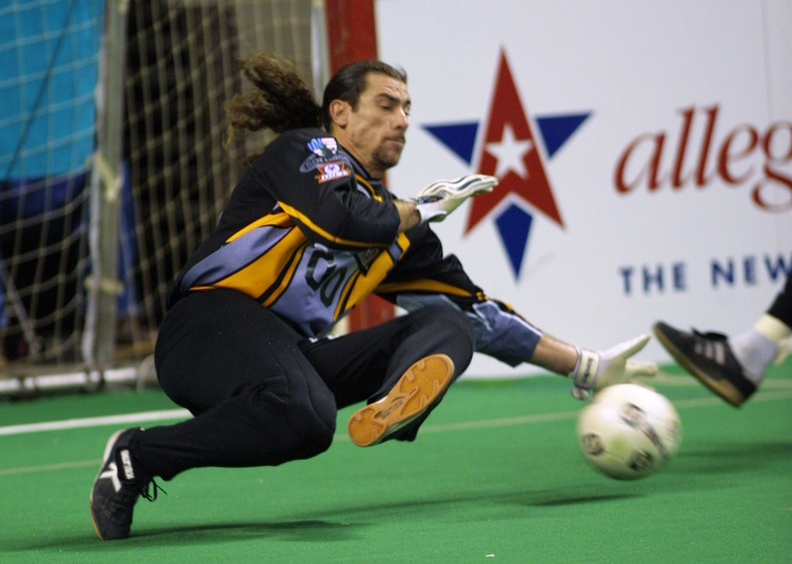
Source of the image: www.crainscleveland.com
Yes, both of the coaches’ you mention have their roots in indoor soccer, but they are passionate about futsal, and they wish to see the sport grow and our national team do well. When the head coaching positioned opened up in 2019, I recommended Dusan for the position. I had met him at a USYF event and discovered his pedigree in the game. I believed he was the most qualified person for the job. I consider my recommendation to be one of my greatest contributions to the sport that I owe my adult identity and livelihood to. I still believe he is the best person to lead our national team.
Regarding your points concerning the MASL, I, unfortunately, believe there is no real desire or impetus for indoor soccer owners to transition to futsal. Indoor soccer is their sport of choice and futsal’s popularity would need to grow significantly for that shift to be considered by them.
I firmly believe that this shift could and maybe should be made, but the US has always ‘marched to the beat of a different drum’ and most of the owners of indoor soccer franchises are not concerned with the sport of futsal. This lack of interest and the nostalgic connection they have with the popularity of the indoor soccer league of the 1980s means they do not have any need or want to understand the benefits of futsal on a wider scale. Particularly for soccer players, especially the youth involved in the sport.
I believe that a move toward futsal would not only be beneficial to soccer-playing youth but could also be a very beneficial move for the franchise owners as the game of futsal is equally, if not more exciting and viable for TV viewers. This development would ultimately raise the level of play for the futsal national team and all soccer teams in our country. Futsal also aligns with American sports culture in several aspects, arguably more so than soccer and indoor soccer, thanks to its rules, strategies, tactics, non-stop action, and the much greater frequency of scoring chances.
As you pointed out in this article, as a world leader in sports marketing, if the US made this shift, it would raise awareness for the game of futsal on a global level, and ultimately benefit the sports of soccer in the US and futsal internationally.
I have spent countless frustrating hours processing this, but until a real effort to promote the game is made by its existing stakeholders and national leaders at different levels, or until the prominent indoor soccer industry decides to make a change, futsal in the USA will never be able to consistently compete on the international stage.
Understanding the way US Soccer operates with its many layers and multiple private entities is an entirely different but crucially important consideration that prevents a concerted effort in a single focused direction. It is the beauty of our capitalist country but in this case, it is a factor that pulls the sport of futsal in different directions and does not allow for it to move forward with a single goal of true development and building our national team.
The introduction of the sport into primary schools, high schools, and universities and ultimately an investment in creating a true professional league is the pathway that the sport needs but that is a herculean task that will take planning, investment, and time which is even more difficult in a society likes ours that thrives on instant gratification.
Given the recent qualifiers, my own experience, and the historical context provided in this article, I find myself agreeing with many of your observations, however, indoor soccer is not necessarily to blame, it just happens to be a convenient scapegoat. Instead the lack of organized futsal leadership, investment, and promotion is the culprit. I believe when an effort to truly get behind those dedicated to futsal and provide opportunities for those who wish to play, grow, and develop the game is made we will undoubtedly rise quickly through the ranks of the international futsal scene. When, and how this transition will be initiated, and who will lead the movement, is the question.
I was impressed by the Canadian National Futsal Team at this year’s Concacaf competition. One of the youngest squads in the competition, all playing futsal for most of their lives and most if not all from a single Canadian Province came ever so close to qualifying for the World Cup. Looking back to 2016, the team that defeated the U.S was mainly players from an Indoor Soccer background, but after that competition, their head coach, a former indoor soccer player, Kyt Selaidopoulos began to move away from recruiting such players. And he began to include players mainly from the local Quebec futsal league.
It’s a ‘chicken or the egg’ scenario, top-down or bottom-up? Currently, the US does have enough platforms for young people to play, but it is a seasonal sport that is supplemental to soccer and heavily weighted with players ages 8-16. Coaching education and development are not standardized or licensed. The US focuses on the young players committed to playing futsal in 8-16 week winter leagues and fragmented tournament competitions. Random futsal coaching programs and certificates are offered to those hungry for more futsal knowledge by the three USSF futsal member associations, United States Futsal Federation (USFF), US Youth Futsal (USYF), United Futsal but they are not consistent. Many futsal-specific clubs are popping up all over the country. Although the developmental benefits to young soccer players are very clear, unfortunately, there is no end game, aside from our national team, for these futsal players once they reach high school age. The very best players have developed their skills through futsal, but they are headed to college to play soccer.
Only a very few are solely dedicated to futsal, and they stand little to no chance of playing at a high level in another country, so they are destined to play in our make-shift semi-pro and ethnic leagues scattered across the USA. Collaboration by existing entities, interest, and belief in the value of the sport by leaders in our soccer federation and our educational systems and investment by those who believe in futsal as a stand-alone sport is a certain pathway to US futsal success. Until some of these steps are taken, coaches of our national team will struggle and have little chance of consistency and success at the international level.
it’s important to note that its players represent only a small fraction of the broader US Soccer scene. Indoor soccer kept soccer alive in our country in the 1980s. The game was played by youth at facilities in many cities and arenas were packed with 10-20,000 fans every week. But in the past decade, the walls have come down. The indoor soccer of the 2000s does not compare to the quality or the popularity of the MISL of the 1980s but the indoor faithful love the sport and are working hard to keep it alive. Especially when almost all of today’s players in the US aspire to play in college and then one of our outdoor pro leagues with the very best playing abroad.
American futsal has a long way to go to become a prominent force in our country. Futsal leaders, myself included, will continue our efforts to promote and grow the game until it finally gains a significant foothold, finds wealthy and passionate investors, and blossoms into the beautiful and popular game that we see in South America and Europe. Futsal will continue to diverge from Indoor Soccer, the sport must aspire to reach the professional level here, but until then our national team coaches must continue to use every resource they have, cherry-pick players, and send the best squad to qualifying competitions.
Currently, the indoor soccer league just happens to be their best option. It’s a problem that has no single answer and needs serious and concentrated efforts to solve and even then, indoor will still be a resource, at times, producing players capable of playing for the national futsal team. But it’s about identifying the right ones, supported by the right coach, with the experience and knowledge to help them transition. Dusan was able to do this, and like I said, I still think he is the best person to lead our national team.
Only someone or some entity that has the will, the power, and most importantly the belief in the value of the sport will be able to implement meaningful change. Until then grassroots programs and futsal true believers will continue to go about our work, developing young talent with the tools to make them the best soccer and futsal players they can be with the hope that one day we can claim to be part of the revolution that leads us to a successful US Soccer and Futsal future.
As we bring this discussion to a close, it’s essential to reflect on the invaluable perspectives shared by individuals deeply intertwined with the fabric of American futsal and Indoor Soccer. In our pursuit of understanding the intricate dynamics shaping the sport’s trajectory, we had the privilege of engaging with Otto Orf, whose experiences and observations shed light on the challenges and opportunities facing futsal in the United States.
Moreover, our dialogue extended to none other than Keith Tozer, a titan in the realm of American futsal and indoor soccer. Having navigated the sport’s evolution for decades, Keith offered his insights concerning futsal’s growth and recognition of the hurdles obstructing its ascent:
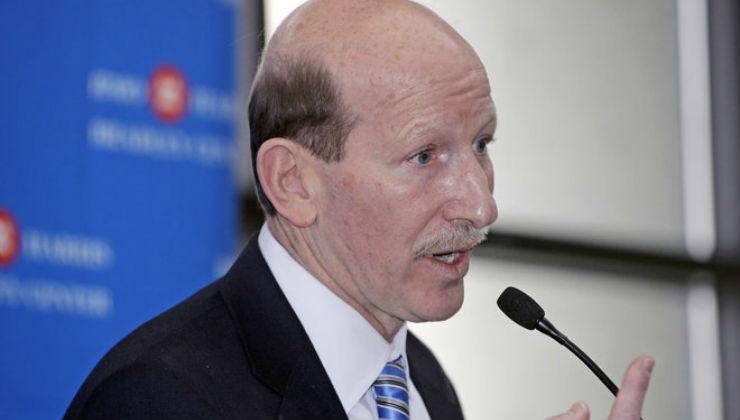
Keith Tozer – former US National Futsal team coach and now Commissioner of the MASL – Source of the image: Milwaukee Journal sentinel
If the U.S. aims to compete on the futsal world stage, a full-time coaching staff is imperative. For too long, the Futsal program has operated within constrained budgets, resulting in limited training camps for national team players and insufficient international friendlies to adequately prepare for global competitions. This deficiency must be addressed by establishing youth national teams, providing a clear pathway and consistent training regimen akin to the senior team, enabling players to seamlessly transition when called upon.
Beyond the national program, regular competitions, particularly at the senior level, are essential to offer young players a platform for progression and pave the way for a professional futsal league. I extend my gratitude to everyone involved in the U.S. for their dedication to growing the game. It’s an arduous journey, with many individuals contributing their time, finances, expertise, and resources. I remain optimistic that with concerted effort, meticulous planning, collaboration and strong leadership at all levels, the U.S. will eventually emerge as a formidable force in futsal.
In conclusion, the journey of American futsal stands at a critical juncture. As we’ve explored, the involvement of organizations like MASL presents both opportunities and challenges for the sport’s future trajectory. It’s evident that a collective effort is needed to prioritize futsal within the broader landscape of U.S. Soccer. This requires robust support from governing bodies, increased investment in player development, and a strategic shift towards nurturing talent from grassroots to the professional level.
The insights shared by Otto Orf and Keith Tozer underscore the importance of concerted action, from fostering a robust coaching infrastructure to providing ample opportunities for young talent to flourish. While obstacles persist, fueled by divergent interests and historical legacies, there’s an undeniable sense of optimism among those committed to futsal’s growth.
As we move forward, it’s essential to embrace dialogue, collaboration, and a shared vision for the sport’s future. Only through collective determination and unwavering dedication can American futsal realize its full potential on the global stage. So heed the call to action, American Futsal unite your efforts, and pave the way for a vibrant, thriving futsal community in the United States.
Organ Donation
Futsal Focus is a supporter of Dáithí Mac Gabhann and his family’s campaign to raise awareness of Organ Donation. We encourage our readers to learn more about Organ Donation: https://www.organdonation.nhs.uk/
Futsal Focus
You can read more articles about global futsal by going to the top navigation bar or by clicking here
If you like this article and would like to keep updated on Futsal news, developments, etc then you can now follow Futsal Focus via Google News by following our page which will send you an alert as soon as we publish an article so please click here and follow us on Google.
You can also keep updated on Futsal news, developments, etc then please submit your email below in the Subscribe to Futsal Focus option.
Follow Futsal Focus by clicking on Facebook, Twitter, or Instagram or on the social media buttons on the website.


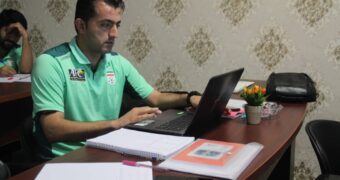
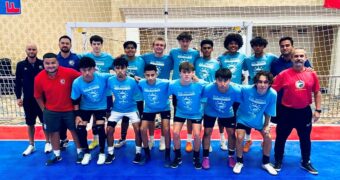



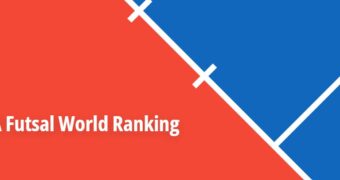








![Validate my RSS feed [Valid RSS]](https://www.futsalfocus.net/wp-content/uploads/2020/01/valid-rss-rogers.png)

